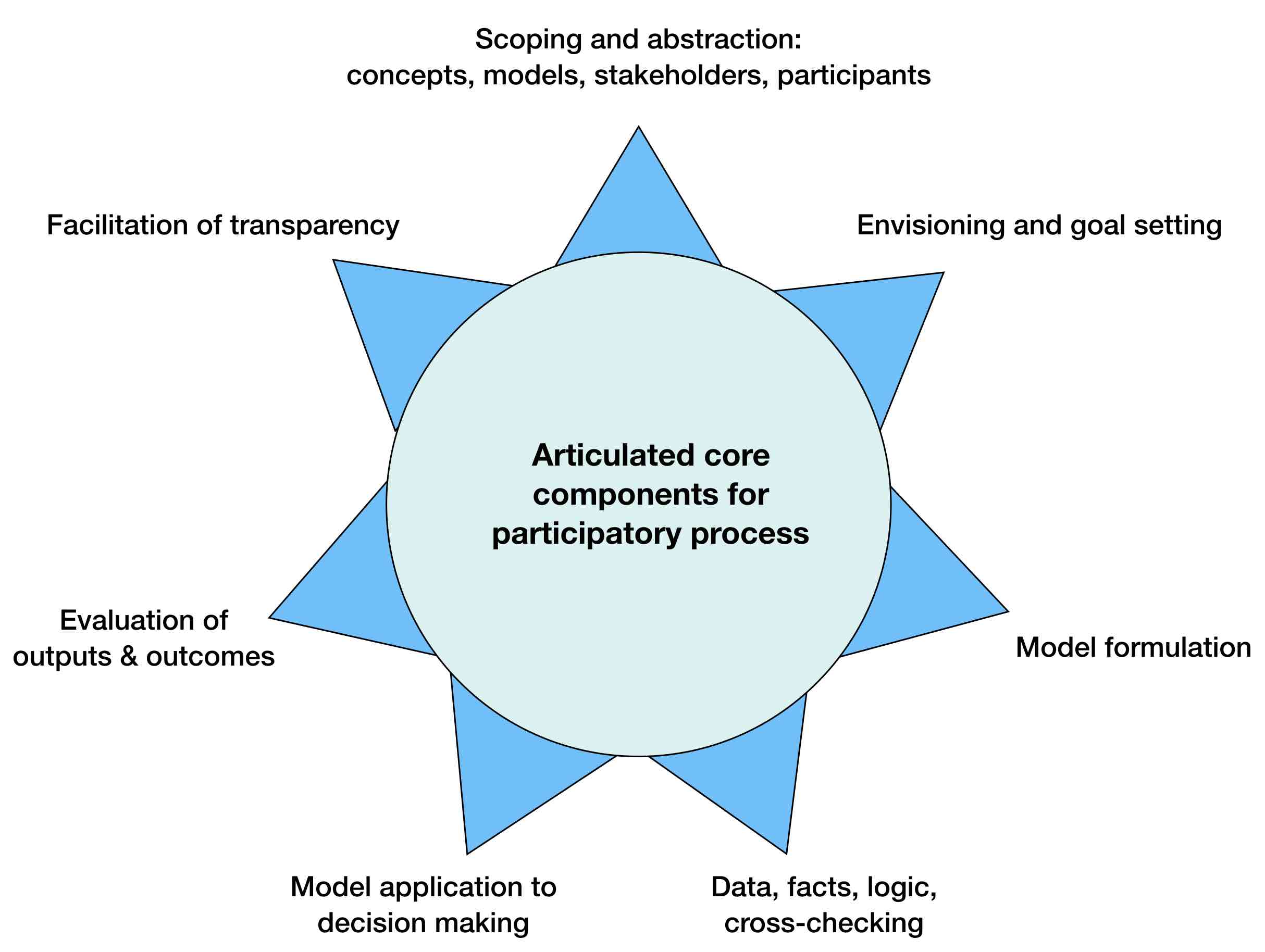Participatory modelling
Create a shared view of an issue or phenomena with stakeholders.
There has been a real increase in the interest in involving stakeholders in resource management, both in terms of policy development and in terms of the development of the supporting information. Decision-makers realise that policy recommendations are less likely to be acted on if stakeholders are excluded from the policy development process, and modellers realise that the public can provide considerable knowledge and skills. It can also help to create relevant models, that stakeholders need.
Participatory modelling can be thought of as a form of citizen science, where people are involved in the development of new knowledge.
There are seven general domains in the modelling process where stakeholders can engage.

Stages of model development where stakeholders can engage (Voinov, Kolagani et al. 2016)
Things to consider if you are embarking on participatory modelling
- Who benefits? - You need to be really clear why you think participatory modelling is of benefit both to you and the other participants.
- How much influence can people have? Are you building a model from scratch or augmenting an existing model?
- Where can people be involved? What are your modelling steps are and what involvement people are going to have in them?
- Does working with some stakeholder groups facilitate or prevent you working with others, or affect how to project is seen by other groups?
- What is the level of time commitment? (This is somewhere the stakeholder matrix can be really useful)
- What is the urgency of the project? (Participatory modelling can be more time-consuming)
- How are people going to continue to be involved? How will they stay updated?
The stages of model development has 'core components' in the centre. These core components establish the rules of engagement and cover topics such as: mechanisms for exchanging and sharing, approaches for managing differences (e.g. political, ideological, ethical) respectfully, approaches for managing power relations, ensuring representation of perspectives, commitments around supporting outcomes of modelling and agreement on evaluation.
More information
A presentation on Participatory Modelling - What, Why and How?
Voinov, A., N. Kolagani, M. K. McCall, P. D. Glynn, M. E. Kragt, F. O. Ostermann, S. A. Pierce and P. Ramu (2016). "Modelling with stakeholders. Next generation." Environmental Modelling & Software 77: 196–220.
Krueger, T., T. Page, K. Hubacek, L. Smith and K. Hiscock (2012). "The role of expert opinion in environmental modelling." Environmental Modelling & Software 36: 4–18.

